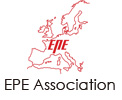INTERNATIONAL POWER ELECTRONICS CONFERENCE -ECCE ASIA-
IPEC-Hiroshima 2014
May 18th - 21st, 2014, International Conference Center Hiroshima, Japan
OVERVIEW
| Sunday May 18 |
Monday May 19 |
Tuesday May 20 |
Wednesday May 21 |
|
|---|---|---|---|---|
| Morning | Opening Session Plenary |
Regular Sessions | Regular Sessions | |
| Afternoon | Industrial Seminar | Regular Sessions | Regular Sessions | Regular Sessions |
| Evening | Welcome Party | Banquet |
Conference Program
Program at a Glance
![]() As of May 16, 2014
As of May 16, 2014
Tentative Program
![]() As of May 14, 2014
As of May 14, 2014
Session Chair List
![]() As of May 7, 2014
As of May 7, 2014
Plenary Speakers
Contributions of Japan to Power Electronics and Drives
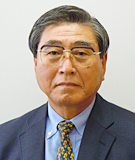
Prof. Kouki Matsuse
Department of Electrical and Electronic Engineering,
Meiji University
Kouki Matsuse received the Ph.D. degrees in electrical engineering from Meiji University, Tokyo, Japan, in 1971. In 1971, he joined the faculty of Meiji University as a Lecturer of Electrical Engineering. Since 1979, he has been a Professor in the Department of Electrical Engineering. He was a chairperson of the Graduate School of Science and Technology, Meiji University (1994-1996, 2002). He served as the Dean of the School of Science and Technology (1996-2002), Meiji University. Since 1998, he has been invited to be a Guest Professor in the Department of Electrical Engineering, Tsinghua University, China. He has published 90 IEEE transaction class papers, 221 referred international conference full-papers, and is the holder of 17 patents. He contributed to publish many standards of Japan and IEC for power electronics as the chairman of the Japanese National Committee of IEC-TC22 (1997-2009). He is author/coauthor of 14 books and coeditor of "Sensorless Control of AC Motor Drives" (Piscataway, NJ: IEEE Press, 1996). His research interests are power electronics, microprocessor-based controllers for static power converters and drives, sensorless control of ac motor drives.
He was the president of the Institute of Electrical Engineers of Japan (2009-2010). He served as the Chairperson of the Management Committee of IEEJ 1995 International Power Electronics Conference (IPEC-Yokohama '95), and as the Organizing Committee Chairperson of IPEC-Tokyo 2000. Dr. Matsuse is an IEEE Fellow, and received the Outstanding Achievement Awards of the IEEE IAS and the IEEJ in 2000 and 2003.
Abstract:
Japan has significantly contributed to the scientific research, technology, and commercialization of the power electronics systems including power devices and high power converters for various applications. Japanese power electronic products account for a large share in the world market compared to a majority of other countries. Japan has large international corporate conglomerates that are among the best-known electronics, power electronics, and automotive companies in the world. These companies use significant amount of power electronics in their products.
In this presentation, contribution of Japan not only in industrial applications but also in transportation applications will be discussed. Especially, three types of motor drives : railway, elevator, and automotive applications focusing on development and advancement of ac drives will be discussed. AC drives are commonly used technologies in these three applications. Japanese companies developed advanced high-power devices for use in Shinkansen starting from Gate Turn-off thyristors in 1964 to silicon carbide devices in 2012. Japanese companies were also the first to develop special IGBT modules and drives based on interior permanent magnet motors for hybrid vehicles such as Toyota Prius. The elevator drives were converted from induction motor technology to permanent magnet motor based drive systems. In addition, contributions of a few of the Japanese companies for advancing and commercializing the power electronics technology (including Power Devices, Power Converter, and Motor Drives) for other applications will also be briefly presented.
The on-going research work, the future direction of research, and the efforts to establish international standards on Power Electronics and Drives will be discussed. A brief history of the International Power Electronics Conference (IPEC) (1983, 1990, 1995, 2000, 2005, and 2010) starting from the Pre-IPEC conferences such as the U.S-Japan Cooperative Science Seminar on Analysis and Design in Power Electronics that was held in 1981 will also be presented.
>> page top
Control of the DC Distribution Microgrid System
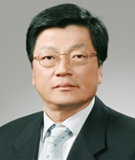
Prof. Bo Hyung Cho
School of Electrical Engineering, Seoul National University
Professor Bo Hyung Cho (IEEE Fellow) received the B.S. and M.E. degrees in electrical engineering from California Institute of Technology, Pasadena, and the Ph.D. degree, also in electrical engineering, from Virginia Polytechnic Institute and State University (Virginia Tech), Blacksburg. Prior to his research at Virginia Tech, he worked for two years as a member of the technical staff of the Power Conversion Electronics Department, TRW Defense and Space System Group, where he was involved in the design and analysis of spacecraft power processing equipment. From 1982 to 1995, he was a professor in the Department of Electrical Engineering, Virginia Tech, Blacksburg, Virginia. He joined the school of Electrical Engineering, Seoul National University, Seoul, Korea in 1995 and he is presently a professor. He was the chairman of the Korean Institute of Power Electronics(KIPE) for 2years. His main research interests include power electronics, modeling, analysis and control of spacecraft power processing equipment, power systems for space station and space platform, DC power distribution, Renewable energy sources, Energy Storage system, EV and distributed power systems. Dr. Cho was a recipient of the 1989 Presidential Young Investigator Award from the National Science Foundation.
Abstract:
Recently, interest in distributed generation including renewable energy sources and energy storage systems has been increased due to the depletion of fossil fuels, environmental issues and the requirement of electrical energy reliability. The power electronic based DC distribution system makes easy integration and has a potential for improved system efficiency and reliability. As the multiple sources and storage are interacting, critical issues in the system integration such as control strategies and subsystem interaction must be addressed.
In this presentation, configuration for multiple sources are studied and characteristic of each source is considered for control strategy. For the efficient and stable management of the system, two-level hierarchical control strategy is proposed. To manage stored energy economically within autonomous system, central control-layer which is implemented through low bandwidth communication interface commands charging/discharging power scheduling. Each converter operates independently by local control-layer which performs scheduling instruction using indirect droop method. Thus, converter can transit mode autonomously according to conditions, which results in improved reliability of a power system and maximized utilization of renewable resources.
>> page top
Energy efficiency improvement technology of induction motors - High efficiency remanufacturing of low efficiency induction motors
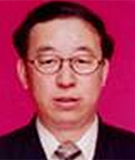
Prof. Dianguo Xu
Assistant President (International) & Professor (Electrical Engineering)
Harbin Institute of Technology (HIT)
Dianguo Xu (M'97, SM'12) received the B.S. degree in Control Engineering from Harbin Engineering University, Harbin, China, in 1982, and the M.S. and Ph.D. degrees in Electrical Engineering from Harbin Institute of Technology (HIT), Harbin, China, in 1984 and 1989 respectively. In 1984, he joined the Department of Electrical Engineering, HIT as an assistant professor. Since 1994, he has been a professor in the Department of Electrical Engineering, HIT. He was the Dean of School of Electrical Engineering and Automation, HIT from 2000 to 2010. He is now the assistant president of HIT. His research interests include renewable energy generation technology, multi-terminal HVDC system based on VSC, power quality mitigation, and speed sensorless vector controlled motor drives. He published over 600 technical papers. Dr. Xu is a senior member of IEEE, an Associate Editor for the IEEE Transactions on Industrial Electronics. He serves as Chairman of IEEE Harbin Section.
Abstract:
Energy shortage has nowadays been a global issue and draws great attentions from academia and government worldwide. It is reported that 19461.7 TWh electricity was consumed in 2012 globally, more than half of which was taken by electric machines. Whereas low-efficiency induction motors (IMs) dominate electric drive applications. According to the international standard approved by International Electrotechnical Committee (IEC) in 2008, the efficiency of most IMs is below IE3. By casting copper instead of aluminum in the squirrel cage, the efficiency can be improved to IE3 but hardly IE4 considering the frame size. Moreover, casting copper is much more difficult technically and expensive than aluminum, which makes such IMs still rare species in the market. On the other hand, replacing IMs by high-efficiency permanent-magnet machines (PMs) will cause tremendous waste since the entire IMs will be obsoleted. Besides, the high replacement cost and long return period are also unacceptable to users. To take full advantage of existing IMs and achieve super high efficiency, a novel methodology of remanufacturing is proposed here where the original stators, shafts, bearings and housings etc. of IMs are preserved, and only the squirrel-caged IM rotors are replaced with optimally designed interior permanent magnet (IPM) rotors. Thanks to such remanufacture, not super high efficiency, i.e. IE4, can be easily achieved with low cost and short return period, high performance sensorless control is also available because of the intrinsic good back electromotive force (EMF) waveform and high salient ratio of IPM machines, which further reduces the cost and enhances the reliability of electric drive systems. Furthermore, equipped with inverters for variable speed drive (VSD), oversized installations can be avoided, which additionally saves the capacity and improves the efficiency of the systems. Experimental tests have been done and shown satisfying results. Meanwhile industrial applications are underway, and good economic feedback can be expected
>> page top
Solid-State Transformers - Key Components of Future Traction and Smart Grid Systems
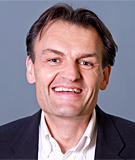
Prof. Johann W. Kolar
Director, Power Electronic Systems Laboratory
Department of Information Technology and Electrical Engineering (D-ITET)
Swiss Federal Institute of Technology
(ETH) Zurich
Johann W. Kolar (S'89-M'91-SM'04-F'10) is a full professor in Power Electronics at the Swiss Federal Institute of Technology (ETH) Zurich and Chair of the ETH Power Electronic Systems Laboratory. He has proposed numerous novel converter topologies and modulation/control concepts, e.g., the VIENNA Rectifier, the Swiss Rectifier, and the three-phase AC-AC Sparse Matrix Converter. In this context he has published over 400 scientific papers and has filed more than 110 patents. The focus of his current research is on AC-AC and AC-DC converter topologies with low effects on the mains, Solid-State Transformers for Smart Microgrids, ultra-compact and ultra-efficient converter modules employing latest power semiconductor technology (SiC and GaN), Power Supply on Chip Systems, multi-objective optimization, and ultra-high speed and bearingless motors. In the course of his research he has supervised over 60 Ph.D. students and PostDocs. Dr. Kolar is a Fellow of the IEEE and received 17 IEEE Transactions or Conference Prize Paper Awards. He initiated and/or is the founder/co-founder of 4 ETH Spin-off companies. He is a Member of the Steering Committees of several leading international conferences in the field and has been serving as an Associate Editor of the IEEE Transactions on Industrial Electronics and Power Electronics.
Abstract:
Solid-State Transformers (SSTs), i.e. high power three-phase or single-phase AC-AC converters with integrated medium frequency (MF) isolation are providing - in contrast to passive line-frequency (LF) transformers - full control of the power flow as well as low construction volume and are therefore key components of future Smart Grids, e.g. for interfacing medium voltage (MV) and low voltage (LV) power distribution network. First, the history, basic properties and scaling laws of passive transformers are briefly reviewed and the evolution of the SST concept from early basic structures to complex modern arrangements featuring also a low voltage DC port is described and possible applications in traction / transportation and mircrogrids integrating renewable energy sources and battery storage systems are discussed. Next, the different SST concepts proposed in the literature are grouped into distinct categories, depending on their controllability and level of modularity concerning the partitioning of the overall power conversion function, the constitution of the three-phase property and the handling of the medium voltage. In this context also the series resonant operation of the Dual Active Bridge in discontinuous current mode which is frequently employed in SST structures is briefly explained and related issues of zero current switching of IGBTs are discussed as well as design aspects of high power MF transformers. Also, real implementations of full scale systems for traction and high power battery charging are presented. Furthermore, an estimation of the realization costs of a typical SST is presented in comparison to an alternative system employing a (LF) transformer in combination with a full power AC/AC or AC/DC converter stage which identifies the SST as clearly preferable option for MVAC/LVDC conversion, as a higher efficiency and significantly lower volume is achieved at about equal realization costs. Subsequently, topics and findings of current research on SST systems at ETH Zurich, e.g. the Pareto-optimal design of liquid cooled MF transformers, transformer flux monitoring employing the Magnetic Ear, the calculation of the optimum number of levels and the filtering of CM currents of cascaded H-bridge converters, the analysis of unidirectional SST topologies and the analysis of the impact of mixed-frequency voltage stresses on the MF transformer insulation materials are briefly presented and the future potential of SiC power semiconductors in SSTs is commented. Finally, an overall evaluation of the SST concept against a passive LF transformer and a LF transformer with series connected rectifier-inverter stage is given which highlights the challenge of simultaneously achieving a high functionality, high efficiency and low volume while ensuring reasonable costs and high reliability which is a prerequisite for employing SSTs in future power systems.
>> page top






